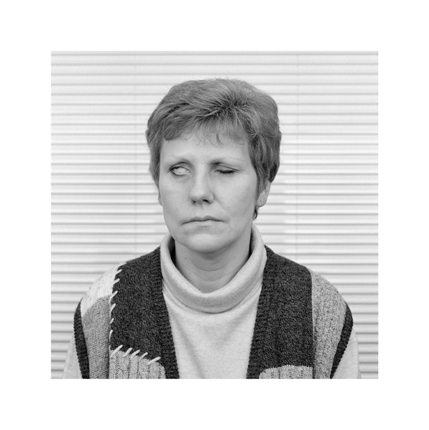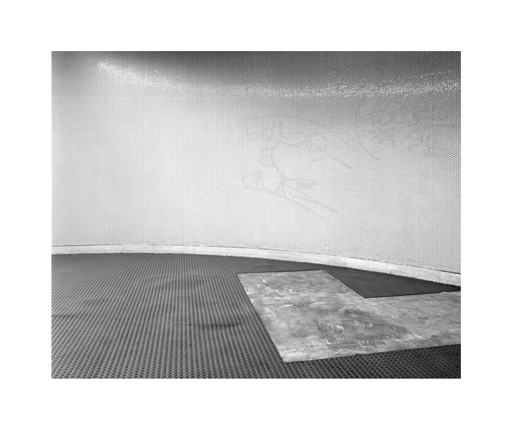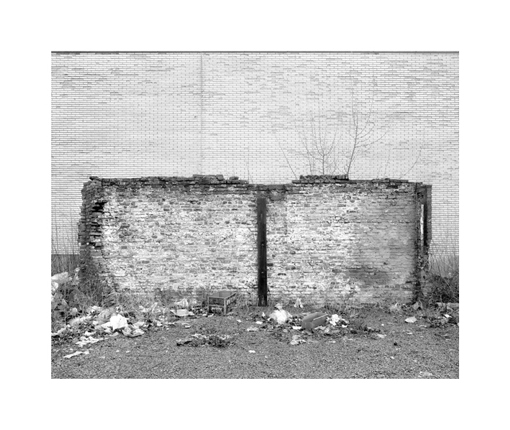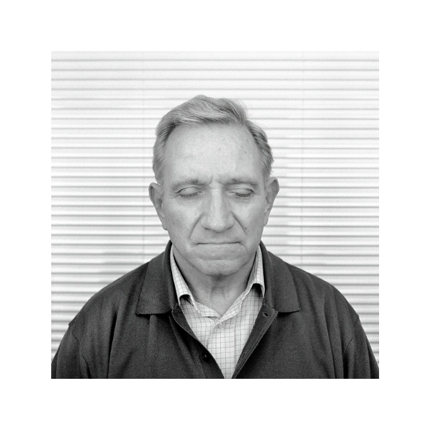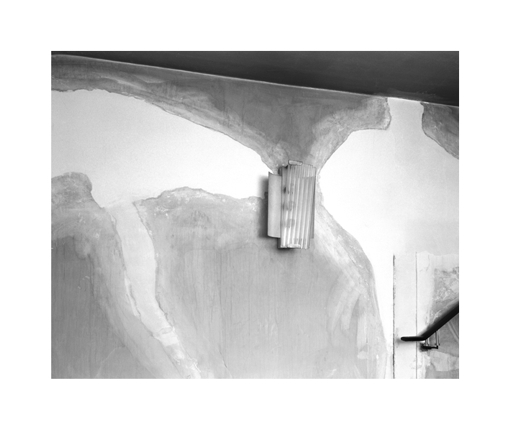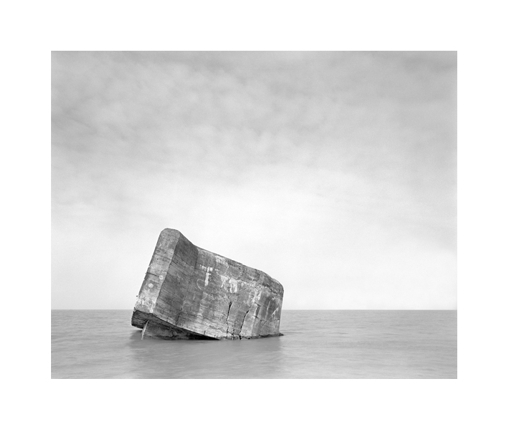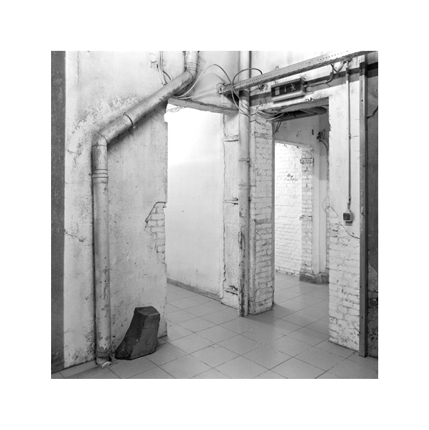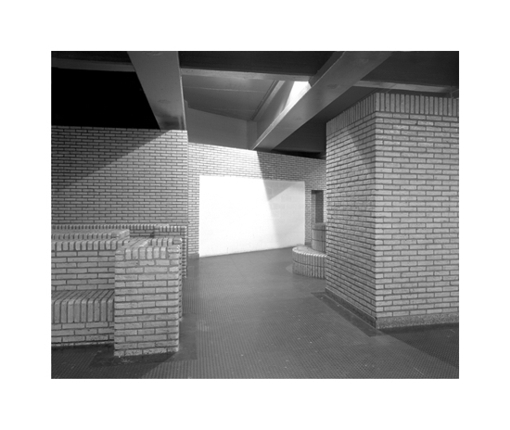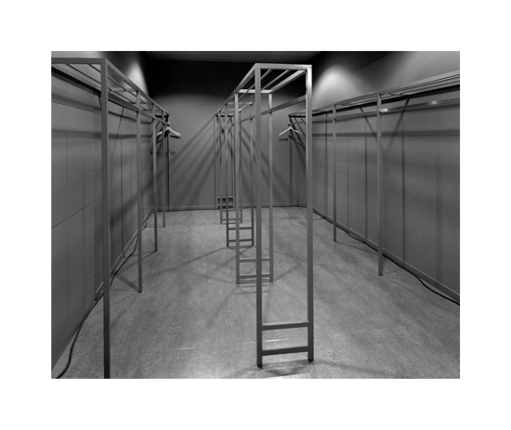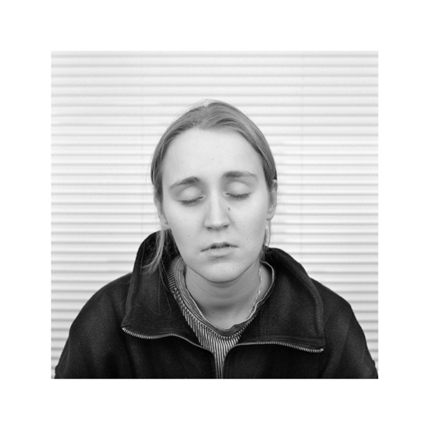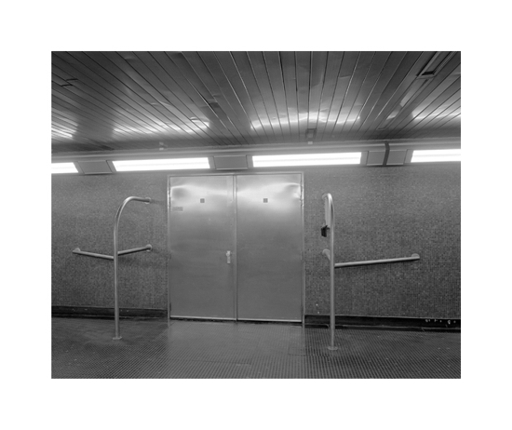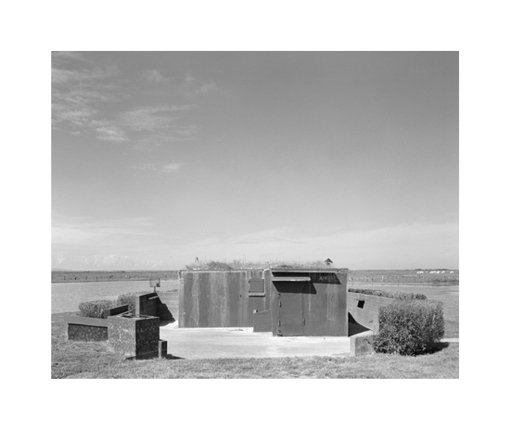What we see of things are the things.
Why would we see one thing when another is there?
Why would seeing and hearing be to delude ourselves
When seeing and hearing are seeing and hearing?
The essential is knowing to see,
To know seeing without thinking,
To know seeing when seeing
And not think when seeing
Nor see when thinking.
Fernando Pessoa, Heterónima, 1914
A face with eyes closed – is it like a blind wall? A windowless wall, a blank portrait. The rare (family) portraits that Paul D'Haese has made so far do not look back, not because they are unable or unwilling to do so – they are not asleep or blind – but because they have been asked to close their eyes. The photographer himself requested it. Perhaps because he realises that pictures with eyes closed are confusing, alienating, and because he has some share in that uneasiness. Like the Greek philosopher Democritus, who is said to have put out his eyes in order to arrive at a better insight. Maybe.
But Paul D'Haese is certainly at one with the way in which Dirk Lauwaert reads pictures with eyes closed. They work very differently, he writes, but it is because closing the eyes is immediately linked to the gaze of the camera. 'It is the impossibility or unwillingness to place ourselves in that gaze that moves and confuses us.' The picture with eyes closed makes the viewer confront a face that offers no rules, does not engage in any dialogue, but turns itself away. And that image, according to Dirk Lauwaert, turns out to imply a critique of the act of viewing itself. Reality is invisible. Photography only shows appearances. You are nightblind when you lose all sense of shape and direction in the dark. Are these photos dayblind?
At the same time, these few idiosyncratic portraits display the same kind of systematic approach that we find in the photographs of landscapes and architecture that constitute most of his oeuvre. Paul D'Haese does not take photos at random.
His photographic project moves in the same direction as in what he does for a living – interior architecture – in which he has deliberately opted for simplicity, austerity, minimalism. He is partly searching for the conceptual and above all visual clarity of the Bechers and their followers, he has learnt a good deal from the open landscapes, the feeling for the totality and the detail of a John Davies, among others, or has eagerly embraced the odes to banality of a Stephen Shore and Dirk Braeckman's tactile reworkings of apparently ugly sites. Without being fixated on a particular idiom or motif.
So he shows us – almost always in a razor-sharp black-and-white unison – the smooth remains of a bunker rising monumentally from the sea like a prehistoric relic, for instance, beside a sad duet for illegal dumping and brick walls (even though a young tree emerges from behind the most pockmarked stone construction in defiance of death). Or: a minimal art installation that on closer inspection turns out to be a functional cloakroom, beside a convincing abstraction, composed with a reflecting wall of graffiti and the ruined carpet of the Brussels metro. Or: a seascape with a panoramic Raoul De Keyser sky and a narrow strip of water on which artificial ducks unconcernedly bob towards the horizon, beside the toned down colour photo of a half-painted room with laconic sculpture trouvée.
All those photos, including the portraits, are given a well-nigh classical less-is-more effect by Paul d'Haese. They are conventional in the positive sense of the word. To put it differently, they have incorporated a number of both technical and formal parameters offered by the history of photography to produce simultaneously clear and confusing images. It goes without saying, but is not obvious.
Without raucous effects or manifest visual interventions, understated and straight, Paul D'Haese represents fragments of the world in which he moves with increasing accuracy. A strictly delimited universe. Dayblind. But every interesting photographer has to be blind in that sense. In fact, as the mathematician, psychotherapist and poet Georges Spencer-Brown said in 1969: 'Existence is a selective blindness'.
Erik Eelbode
23 March 2008

